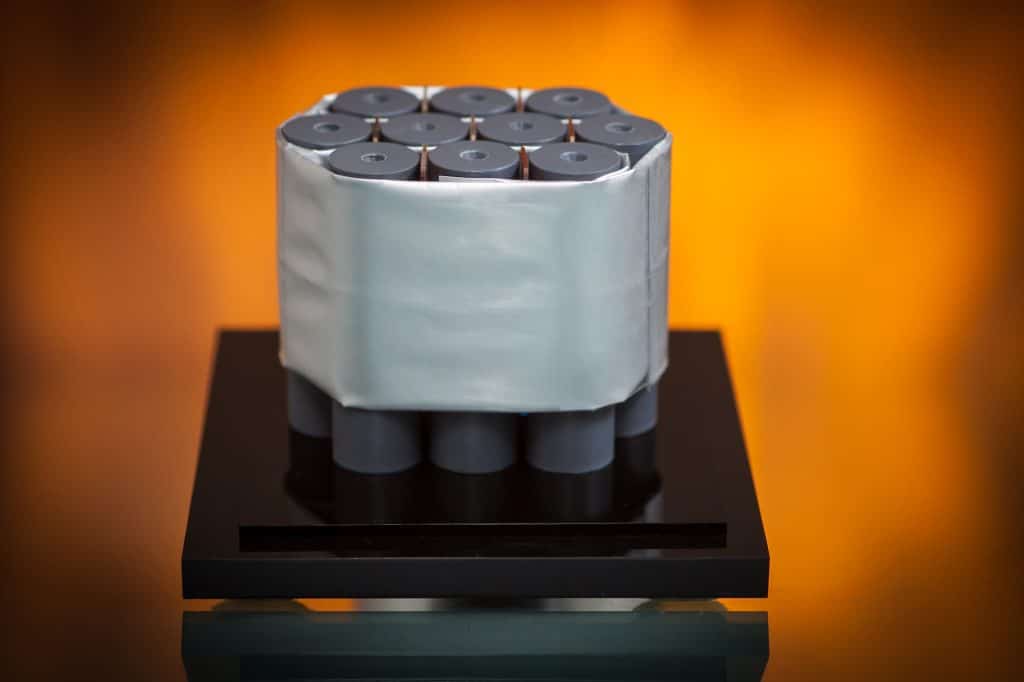San Jose, CA. – September 20, 2015. KULR Technology today announces successful testing of its vaporizing heat sink technology to mitigate lithium ion battery thermal runaway propagation. NASA Propulsion and Power Division performed a series of tests under the leadership of Dr. Eric Darcy, Battery Group Lead at NASA-Johnson Space Center.
Lithium-Ion Battery (Li-B) 18650 cells have a slight chance of spontaneously shorting and experiencing thermal runaway. Neighboring cells can also be heated above the critical 130°C threshold level which can cause them to short with the same consequences resulting in thermal runaway. KULR’s carbon fiber based Thermal Runaway Shield (TRS) is a fully passive solution to mitigate thermal runaway propagation from cell to cell.
KULR and NASA’s collaborative tests were performed on a 10-cell configuration with Samsung 18650 cell. The spacing between each cell was 2 millimeters. TRS successfully prevented thermal runaway by isolating heat to just the single cell preventing propagation and thermal runaway from occurring in adjacent cells. TRS kept adjacent cell temperature below 85°C, well below the critical 130°C threshold level.
Dr. Timothy R. Knowles, CTO of KULR Technology, has over 30 years of experience in thermal management technology for aerospace applications. He has worked on numerous thermal management solutions including those used in the Mars Rover battery enclosure, NASA X-38 battery heat sink, Mercury Messenger PCM heat sink, LEO Flight heat sink and many other SBIR projects. KULR’s achievable goal is to take this cutting edge space technology and create a cost effective, mass market solution for a diverse array of commercial applications.
This is a big breakthrough in passive thermal management of the lithium ion battery. Whereas Tesla EV uses an active liquid cooling mechanism for its massive battery unit, most commercial and consumer electronic applications involving Li-B batteries and separately the transportation of lithium ion battery cells can only afford passive cooling due to cost, weight and size restrictions.Mr. Michael Mo, KULR Co-Founder and CEO
Mr. Mo stated, “We are very excited about the test results from NASA. Based on this technology, we are developing our next generation TRS products that are highly thermally conductive, light-weight, and cost-effective for mass market applications. We will be announcing our new product line in 2016.”
For more information about KULR’s TRS product and technology, please contact [email protected]

